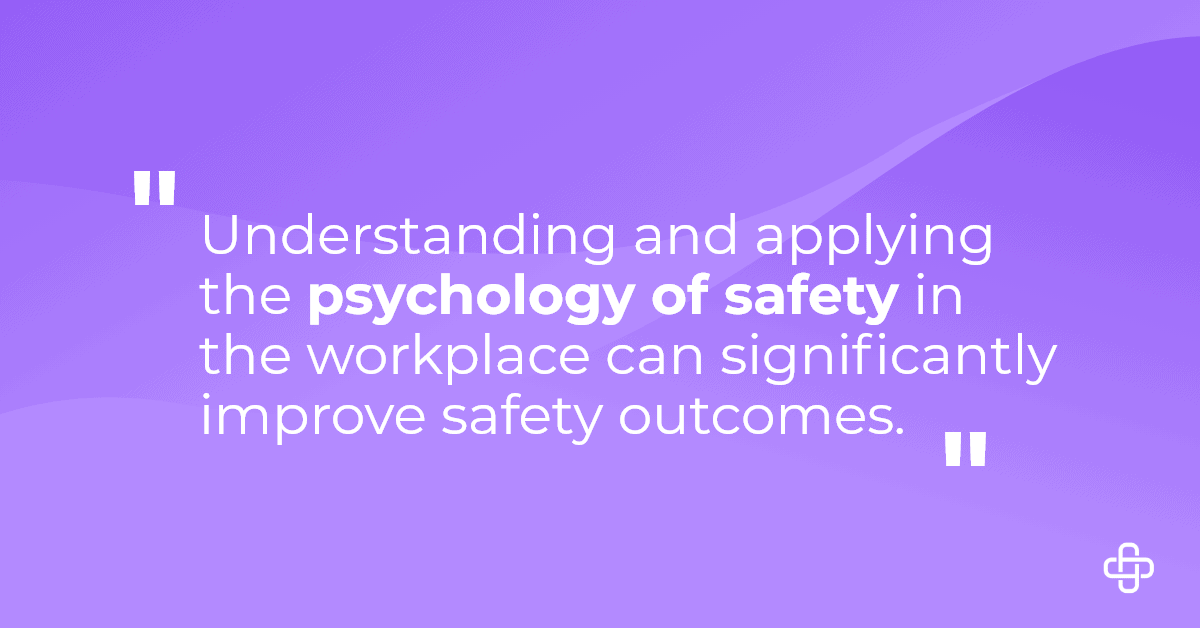Creating a safe workplace is more than just enforcing rules and regulations.
It’s about understanding the psychology of safety and cultivating an environment where employees naturally gravitate towards safe behaviors.
Understanding these psychological principles for safety managers, HR professionals, and business leaders can transform safety from a box-ticking exercise into a dynamic, engaging process that genuinely protects people.

Understanding the Human Element in Safety
The human element is crucial when considering workplace safety. Cognitive, emotional, and social factors significantly influence how we perceive and act upon safety protocols.
Cognitive biases, such as overconfidence or complacency, can lead employees to underestimate risks. Understanding these biases can help safety managers devise strategies to counteract them.
Emotionally, stress and fatigue can impair judgment and decision-making. Employees under constant pressure may prioritize productivity over safety, leading to potential hazards.
Addressing emotional well-being through supportive policies and mental health resources can mitigate these risks.
Social factors also play a role. Peer pressure and group dynamics often shape individual behaviors in workplace settings.
Creating a culture where the group values and encourages safety reinforces positive safety behaviors.
Regular team meetings and peer recognition for safe practices can enhance this collective mindset.
Behavioral Safety Techniques for Positive Change
Behavioral safety techniques, grounded in psychology, offer practical methods to encourage safe actions.
Positive reinforcement, for example, rewards employees for adhering to safety protocols, thus promoting these behaviors. Recognition programs or incentives can serve as effective reinforcements.
Observation-based safety is another technique where supervisors monitor and provide feedback on safety behaviors.
By observing, recording, and discussing actions, employees become more aware of their habits and are motivated to improve. This method fosters a culture of continuous improvement and open communication about safety.
Role-play and scenario-based training can also simulate real-life situations, allowing employees to practice and internalize safe responses.
These active learning techniques make safety protocols more relatable and easier to implement daily.
The Role of Leadership in Fostering Safety Culture
Leadership plays a pivotal role in shaping an organization’s safety culture.
Leaders’ attitudes and behaviors often set the tone for the rest of the team. A leadership style prioritizes safety and visibly supports safety initiatives, inspiring employees to follow suit.
Management commitment is key. When leaders visibly engage in safety practices, such as attending safety training or discussing safety in meetings, it underscores its importance.
This visible commitment encourages employees to take safety seriously and feel supported in their efforts.
Transparency from leaders about safety goals and progress builds trust and engagement. When employees understand the ‘why’ and ‘how’ behind safety measures, they are more likely to buy into them.
Regular updates and open forums for discussion help maintain this transparency.
Empowering Employees to Drive Safety
Employee involvement is essential for a thriving safety culture. Empowering employees to take ownership of safety initiatives fosters responsibility and innovation.
Here are some effective strategies:
- Involving employees in safety conversations where they can voice concerns and propose solutions
- Training programs that go beyond compliance and focus on skill-building and hazard recognition empower employees to act safely
- Interactive workshops and e-learning modules that allow employees to learn at their own pace can be particularly effective
- Feedback mechanisms, such as suggestion boxes or digital platforms, also enable employees to contribute ideas and express concerns confidently
This openness creates a more inclusive environment where everyone feels valued and responsible for safety.
Measuring Success in Safety Programs
To ensure safety programs are effective, measuring their impact regularly is crucial.
Metrics such as incident rates, near-miss reports, and employee engagement levels provide valuable insights into program success. Tracking these metrics over time helps identify trends and areas for improvement.
Surveys and feedback tools can gauge employee perceptions of safety culture and the effectiveness of training programs. Analyzing this data helps refine strategies and tailor them to effectively meet employee needs.
Investing in data analytics tools can also enhance safety program evaluation. These tools can predict potential safety issues based on historical data, allowing proactive measures.
Regularly revisiting and updating safety protocols based on these insights ensures they remain relevant and effective.
The Impact of Axiom Medical’s Injury Case Management Solution
Axiom Medical’s injury case management solution transforms workplace safety by integrating dual physical and mental health assessments, ensuring comprehensive care for employees.
This holistic approach not only addresses the immediate physical health needs but also considers the psychological wellness of individuals, vital for maintaining overall safety.
With 24/7 support, Axiom Medical eases the burden on employers, ensuring prompt and expert management of injury cases.
This constant availability minimizes downtime, promotes swift recovery, and alleviates stress, creating a safer and more supportive workplace environment where employees can thrive.
By proactively managing physical and mental health, Axiom Medical empowers organizations to foster a thriving safety culture, thus enhancing workforce resilience and productivity.
Embracing the Psychology of Safety
Understanding and applying the psychology of safety in the workplace can significantly improve safety outcomes.
Organizations can create environments where safety thrives naturally by considering cognitive, emotional, and social factors, employing behavioral safety techniques, and fostering a culture of leadership and empowerment.
For those ready to take safety to the next level, consider integrating these principles into your organizational practices. Reflect on your current safety culture and identify areas where psychological insights could enhance your strategies.
Collaboration with experts and continuous learning are key to maintaining a robust safety culture.
To explore these concepts further, join us for Axiom Medical’s upcoming free webinar, “Data Driven Insights for Safety.”
Discover how data analysis can predict and prevent potential safety incidents and learn how to implement more robust safety protocols.
Whether live or on your schedule, this webinar is an invaluable resource for anyone committed to workplace safety.
Charli Pedersen is a published writer featured on Axiom Medical’s blog. She holds a bachelor’s degree in English, Professional and Technical Writing, and has experience creating content for businesses and non-profit organizations.










